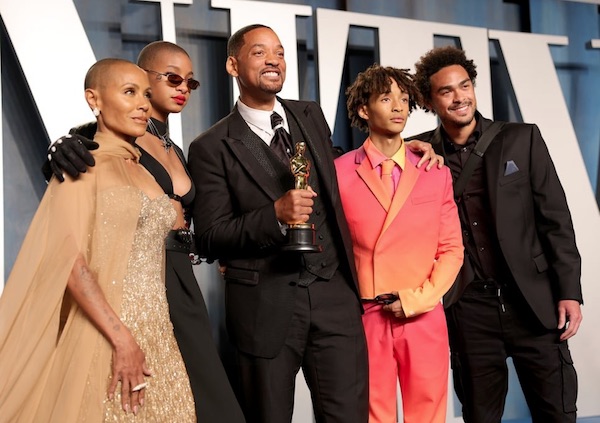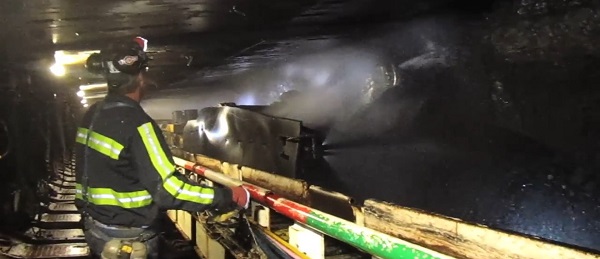Entertainment
Canadian Finals Rodeo ‘Cabaret Corral’ Live Music Line-Up Announcement

The 49th Canadian Finals Rodeo (CFR 49), set to run November 1-5, 2023, is right around the corner, and we are excited to announce this year’s ‘Cabaret Corral’ country music entertainment
lineup.
With doors opening at 4:00 pm Wednesday, Thursday, Friday, and 10:30 am Saturday, the nightly free event features live music immediately following each rodeo performance in the Prairie Pavilion, showcasing some incredible Canadian talent, including:

Wednesday, November 1st – Brandon Lorenzo
Brandon Lorenzo is a homegrown country artist with a modern twist. Lorenzo was honoured with the titles of Male Vocalist of the Year and Male Entertainer of the Year at the North American
Country Music Awards International (NACMAI) in Nashville in 2023. Additionally, he has received nominations for two categories at the upcoming Jose Awards in Nashville in October. Brandon is an Eight-time Country Music Alberta Nominee, the 2020 Global Country Canada Winner and the 2020 YYC People’s Choice Award Winner.
Lorenzo released his latest single, “One of a Kind”, to country radio in August, showcasing his evolving musical style. Lorenzo has an ever-growing presence in the Canadian Country Music Industry and has gained international recognition, opening for names such as Randy Houser and Brett Kissel, to name a few. He is a rising star, leaving an indelible mark on the country music scene.

Thursday, November 2nd – Shantaia
2023 SCMA Female Artist of the Year Shantaia is a Nashville based singer/songwriter who was born and raised in the tiny town of Spiritwood, Saskatchewan. Showcasing powerful and unique vocals, Shantaia’s voice, much like her name, is unforgettable.
Shantaia recently toured with The Washboard Union, and has also opened for names such as, Kane Brown, Chris Lane, Ryan Hurd, Emerson Drive, Charlie Major and more.
Shantaia has played festivals all over Canada, including Cavendish Beach Music Festival, North by North East, Dauphin’s Country Fest, Country Thunder Saskatchewan, and because of SaskMusic
and Breakout West, Shantaia played an official Americana Fest Showcase in 2019 in Nashville.

Friday, November 3rd – Quinton Blair
Honest as a day spent on a tractor and driven like the drifting Prairie snow. A 7-time Manitoba Country Music Association award winner, Quinton Blair is a road-running, tale-spinning singer/songwriter. Playing his brand of 90s-infused country from the Shield to the Rockies.
Sharing the stage with countless Canadian and American country acts, Blair has performed his brand of a troubadour, storytelling country that carries heavy undertones both of 70’s outlaw
country and 90’s dancehall country flavour with fans all over North America.

Saturday, November 4th – Drew Gregory – Back by POPULAR Demand!
There is an undeniable authenticity and truthfulness to Drew Gregory’s music. The songs of this award-winning Alberta country music sensation are infused with a down-home realism, a gritty
honesty, and a vibrant sense of rootedness that comes from years spent working the land as a farmer – an aspect of his life that is deeply connected to his talent as a musician, singer, and
songwriter. Over his burgeoning career, to name a few, he has shared the stage and opened the concert and festival dates for Miranda Lambert, Kip Moore, Old Dominion, John Michael
Montgomery, Big & Rich, Emerson Drive, and Chad Brownlee.
These incredible artists will once again be backed by the “CFR All-Star Band,” a collection of Canadian musicians that boast dozens of Canadian Country Music Awards and CCMA Hall-of Fame Honours among them, playing with Canadian icons such as Dallas Smith, High Valley, Gord Bamford, James Barker Band, and many, many more.
The CFR Night Shift continues with the nightly Buckles Presentation at approximately 9:30 pm, and the music rolls on late into the night with DJ B-Town returning to keep the good times
going until the nightly 1:00 am last call.
Additional entertainment announcements will follow in the days ahead. All Cabaret Corral entertainment is free for everyone of all ages to attend and is the place to be for both pre and post rodeo performances at the Canadian Finals Rodeo. Find details, including performance times, at CFRRedDeer.ca.
About the CPRA: With headquarters in Airdrie, Alberta, the CPRA is the official sanctioning body for Professional Rodeo in Canada. The CPRA approves 55 events annually with a total payout exceeding $5.7 million. The organization oversees the Pro Tour Finals each fall, holds their premiere event – the Canadian Finals Rodeo (CFR) – at Westerner Park in Red Deer, AB and endorses the Maple Leaf Circuit Finals in late Nov, as part of Canadian Western Agribition.
About Westerner Park: Westerner Park is Central Alberta’s largest tradeshow, agriculture, sports, entertainment, and convention facility. A not-for-profit organization and agricultural society, Westerner Park generates $150 million annually in economic activity hosting over 1,500 events with 1.5 million visitors each year.
Business
California planning to double film tax credits amid industry decline

From The Center Square
By
California legislators have unveiled a bill to follow through with the governor’s plan of more than doubling the state’s film and TV production tax credits to $750 million.
The state’s own analysis warns it’s likely the refundable production credits generate only 20 to 50 cents of state revenue for every dollar the state spends, and the increase could stoke a “race to the bottom” among the 38 states that now have such programs.
Industry insiders say the state’s high production costs are to blame for much of the exodus, and experts say the cost of housing is responsible for a significant share of the higher costs.
The bill creates a special carve-out for shooting in Los Angeles, where productions would be able to claim refundable credits for 35% of the cost of production.
California Gov. Gavin Newsom announced his proposal last year and highlighted his goal of expanding the program at an industry event last week.
“California is the entertainment capital of the world – and we’re committed to ensuring we stay that way,” said Newsom. “Fashion and film go hand in hand, helping to express characters, capture eras in time and reflect cultural movements.”
With most states now offering production credits, economic analysis suggests these programs now produce state revenue well below the cost of the credits themselves.
“A recent study from the Los Angeles County Economic Development Corporation found that each $1 of Program 2.0 credit results in $1.07 in new state and local government revenue. This finding, however, is significantly overstated due to the study’s use of implausible assumptions,” wrote the state’s analysts in a 2023 report. “Most importantly, the study assumes that no productions receiving tax credits would have filmed here in the absence of the credit.”
“This is out of line with economic research discussed above which suggests tax credits influence location decisions of only a portion of recipients,” continued the state analysis. “Two studies that better reflect this research finding suggest that each $1 of film credit results in $0.20 to $0.50 of state revenues.”
“Parks and Recreation” stars Rob Lowe and Adam Scott recently shared on Lowe’s podcast how costs are so high their show likely would have been shot in Europe instead.
“It’s cheaper to bring 100 American people to Ireland than to walk across the lot at Fox past the sound stages and do it and do it there,” said Lowe.
“Do you think if we shot ‘Parks’ right now, we would be in Budapest?” asked Scott, who now stars in “Severance.”
“100%,” replied Lowe. “All those other places are offering 40% — forty percent — and then on top of that there’s other stuff that they do, and then that’s not even talking about the union stuff. That’s just tax economics of it all.”
“It’s criminal what California and LA have let happen. It’s criminal,” continued Lowe. “Everybody should be fired.”
According to the Public Policy Institute of California, housing is the single largest expense for California households.
“Across the income spectrum, 35–44% of household expenditures go to covering rent, mortgages, utilities and home maintenance,” wrote PPIC.
The cost of housing due to supply constraints now makes it nearly impossible for creatives to get their start in LA, said M. Nolan Gray, legislative director at housing regulatory reform organization California YIMBY.
“Hollywood depends on Los Angeles being the place where anybody can show up, take a big risk, and pursue their dreams, and that only works if you have a lot of affordable apartments,” said Gray to The Center Square. “We’ve built a Los Angeles where you have to be fabulously wealthy to have stable and decent housing, and as a result a lot of folks either are not coming, or those who are coming need to paid quite a bit higher to make it worth it, and it’s destroying one of California’s most important industries.”
“Anybody who arrived in Hollywood before the 2010s, their story is always, ‘Yeah, I showed up in LA, and I lived in a really, really dirt-cheap apartment with like $10 in my pocket.’ That just doesn’t exist anymore,” continued Gray. “Does the Walt Disney of 2025 not take the train from Kansas City to LA? Almost certainly not. If he goes anywhere, he goes to Atlanta.”
Business
Disney cancels series four years into development, as it moves away from DEI agenda

 MxM News
MxM News
Quick Hit:
Disney’s decision to cancel its planned ‘Tiana’ streaming series follows the entertainment giant’s move away from diversity, equity, and inclusion (DEI) policies. The company, once deeply committed to political activism, is now struggling to recover from years of financially disastrous content choices.
Key Details:
-
Disney announced the end of DEI-based management decisions and the winding down of its “Reimagining Tomorrow” initiative earlier this year.
-
The Hollywood Reporter revealed that the cancellation of ‘Tiana’ was part of Disney’s broader retreat from “original longform content for streaming.”
-
Analyst Ian Miller notes that Disney’s prior focus on political messaging rather than quality content led to repeated box office failures.
Diving Deeper:
Disney has spent the past several years prioritizing political activism over storytelling, leading to a sharp decline in the company’s financial performance and audience engagement. According to Ian Miller of OutKick, “Disney assumed that any content that represented ‘diverse’ audiences or featured ‘diverse’ characters would be successful.” That assumption, he argues, proved costly.
The decision to cancel ‘Tiana’ comes at a time when Disney is reeling from multiple box office disappointments, including the expected failure of ‘Snow White’ and the ongoing struggles of both Marvel and Lucasfilm properties. Miller highlights the alarming trend, stating, “Marvel’s ‘Captain America: Brave New World’ may actually lose money, with a disastrous $342 million worldwide gross through the first three and a half weeks.”
The ‘Tiana’ series was first announced in December 2020, a time when Disney was fully embracing its progressive agenda. The Hollywood Reporter noted that the show struggled to find its creative direction despite being in development for over four years. Miller suggests that, in the past, Disney would have continued with such a project regardless of its quality, out of fear of backlash from the left. “Under its prior operating mandate, Disney would have pushed forward anyway, believing that canceling a show based on a black character would be unacceptable to left-wing critics,” Miller writes.
However, the company’s recent shift suggests an overdue recognition that audiences ultimately demand quality over ideology. As Miller points out, “Parents want to take their kids to the movies, or give them family-friendly content to watch at home when they need a distraction. For decades, that meant Disney. Until the company prioritized targeting demographics instead of quality.”
While Disney appears to be learning from its missteps, the road to recovery will be long. As Miller emphasizes, the key to regaining audience trust isn’t to abandon diverse characters but to “get it right instead of doing it to check a box.”
-

 Daily Caller2 days ago
Daily Caller2 days agoTrump Executive Orders ensure ‘Beautiful Clean’ Affordable Coal will continue to bolster US energy grid
-

 2025 Federal Election2 days ago
2025 Federal Election2 days agoBREAKING from THE BUREAU: Pro-Beijing Group That Pushed Erin O’Toole’s Exit Warns Chinese Canadians to “Vote Carefully”
-

 COVID-192 days ago
COVID-192 days agoTamara Lich and Chris Barber trial update: The Longest Mischief Trial of All Time continues..
-

 2025 Federal Election23 hours ago
2025 Federal Election23 hours agoPRC-Linked Disinformation Claims Conservatives Threaten Chinese Diaspora Interests, Take Aim at PM Carney’s Debate Remark
-

 Energy2 days ago
Energy2 days agoStraits of Mackinac Tunnel for Line 5 Pipeline to get “accelerated review”: US Army Corps of Engineers
-

 2025 Federal Election2 days ago
2025 Federal Election2 days agoAllegations of ethical misconduct by the Prime Minister and Government of Canada during the current federal election campaign
-

 Energy14 hours ago
Energy14 hours ago‘War On Coal Is Finally Over’: Energy Experts Say Trump Admin’s Deregulation Agenda Could Fuel Coal’s ‘Revival’
-

 Daily Caller2 days ago
Daily Caller2 days agoDOJ Releases Dossier Of Deported Maryland Man’s Alleged MS-13 Gang Ties





